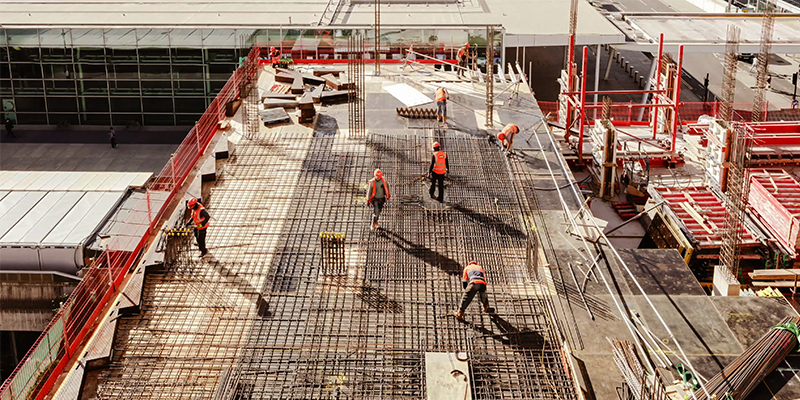The COVID-19 pandemic, and the waves of lockdowns and business interruptions it prompted, affected global supply chains in virtually every industry — and construction is no exception. Due to widespread shortages of building materials, and pent-up demand from projects that were delayed or postponed during the pandemic, costs for materials including lumber, copper, steel, aluminum and vinyl skyrocketed. According to the National Association of Homebuilders, lumber prices spiked to a more than 300% year-over-year increase in May. While prices have since come down, they remain higher than historical averages and data suggest that demand for construction materials is approaching pre-pandemic levels.
In addition, port congestion, exacerbated by Covid-19-related delays, is causing long procurement delays for imported materials. General contractors, subcontractors, and suppliers are frequently unable to guarantee pricing beyond short windows of only a few weeks and are shifting risks associated with the cost of materials to owners and developers. As a result, commercial real estate project managers must do more to mitigate a variety of risks associated with extreme volatility and record-high commodity prices. Here are three strategies that project managers, owners and developers can employ to help ensure their projects move forward as smoothly as possible in the current environment:
Plan – and budget – for escalating material costs
Planning ahead and carving out contingencies in project budgets is a critical first step in mitigating material cost risks, especially given that predicting prices is nearly impossible. Historically, material cost increases slightly exceeded general inflation (3-5%); in the current environment, owners and developers should consider escalation higher contingencies, as much as 10-15% per year. It may seem obvious, but simply planning to spend more on materials and adjusting project budgets accordingly is key to providing options and reducing risk.
Procuring materials in advance is another tactic to help mitigate the risks around uncertainty of availability and pricing. With suppliers unable or unwilling to guarantee quotes for more than a few weeks at a time, owners and developers may prefer to alleviate some uncertainty by purchasing materials in advance and storing them on site until needed for construction. The double handling and storage costs are something developers would normally avoid, but the added cost of this approach includes overall cost certainty that would otherwise be difficult to obtain.
Explore alternative materials
With commodity prices reaching record highs, now is an opportune time to challenge architects and engineers to exercise their creativity and incorporate unconventional materials in their designs. Working closely with contractors and subcontractors to evaluate and source alternative materials can also help mitigate risk. For example, possible lumber substitutions include fiber board or Densglass instead of exterior wood sheathing. For wood-framed projects, prefabricated wall panels and framing systems can limit material waste, decrease labor costs, and potentially expedite project schedules. Warehousing prefabricated systems can help minimize exposure to future cost increases and ensure their availability for applicable projects.
Manage contracts, partner with contractors
When it comes to legal documents, developers and owners should be mindful of both new and existing agreements in the context of material price volatility. Being aware of and fully understanding any material cost escalation clauses is especially important; in many cases, force majeure clauses will be modified to allow for recovery of costs (not just time extensions) for catastrophic events, which can lead to cost escalation. Poorly written default clauses that shift risk in a blanket manner can create open-ended risks that weren’t actually considered.
Where possible, developers should also avoid contracts with open-ended allowances for material costs. In the current environment, partnering the contractors and suppliers by negotiating with them upfront to set an indexed price point with a cap, and agreeing to share in the savings or overages, is a more appropriate approach to mitigating risk. Further, this approach allows for owner participation in any upside as prices stabilize.
It’s also important to keep in mind that steep increases in material prices could in the worst-case lead to subcontractor defaults or bankruptcies. Keeping a close watch on the financial health of subcontractors and material suppliers is critical to minimizing project disruption, even when construction agreements are properly structured to protect the owner in the event of subcontractor defaults. Paying contractors promptly and predictably goes a long way to helping them and their subcontractors manage cash flow. Avoiding a default situation altogether is a far better outcome than simply being protected when the situation does occur.
There’s no commercial real estate crystal ball to tell developers and owners when the costs of building materials will stabilize, but the consensus in the marketplace seems to be that prices will revert to long-term averages as material production ramps back up. In the meantime, a little extra planning, creativity and flexibility can go a long way in managing risks associated with price volatility – and keeping construction projects moving forward.












